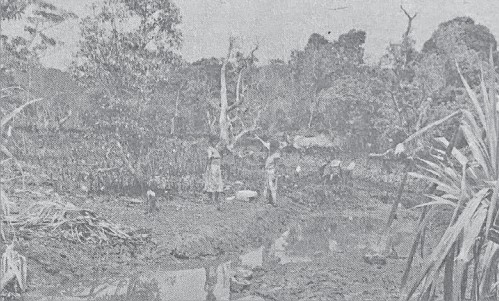The basic diet of Kinoya villagers, they claim, was being destroyed by oil pollution from the Kinoya power station.
According to an article published by The Fiji Times on October 11 of 1983, villagers claimed the oil was polluting the creek which runs through the village.
However, the Fiji Electricity Authority (FEA) said the oil leakages stopped when they took control of the station from the Suva City Council in 1978.
FEA regional manager Central, Noor Dean said the oil was still polluting the mangroves near Kinoya Village because the closed nature of the swamp had prevented it from being washed out to sea.
The article stated that a team from The Fiji Times inspected the site and saw oil deposits in the swamp surrounding the village.
Kinoya villager Mrs Reapi Navuku said the oil leaks were depriving them of seafood that used to be available from the area.
“The oil is slowly killing the mangrove swamp and the fish, crabs and seashells.
“There is hardly any fish or crab to catch now, and the ones that we do find are painted with oil and not a very healthy thing to eat,” Mrs Navuku said.
She said villagers were avoiding eating any of the seafood from the mangrove.
Another resident, Mrs Titilia Bola, said the oil also seeped into the drainage system of the village during high tide.
Mrs Bola said the villagers had already complained to the FEA.
“They only heed our complaints for about two months before they start allowing the oil to flow through the creek again.”
The director of USP’s Institute of Marine Resources, Dr Uday Raj, said the oil spills were not a health hazard to the villagers since the creek wasn’t used for drinking and bathing.
But he said the oil leaks would affect the mosquito population and the environment.
“There is a particular type of mangrove called dogo (Brugiuere gmynorhiza) with projected roots which provide oxygen for the plant.
“The oil literally chokes the mangrove plants, and they eventually die out.
“Meanwhile, one good side of the oil spill is that it reduces the mosquito population by killing the mosquito larvae.”
Mr Noor Dean said their management made inspections of the oil traps to ensure they were working well, ever since they took over.
“Before the water leaves the station, it seeps into the oil traps which only allow the water to flow through.”
According to the article, he said they were carrying out checks every day to ensure no oil flows through.



